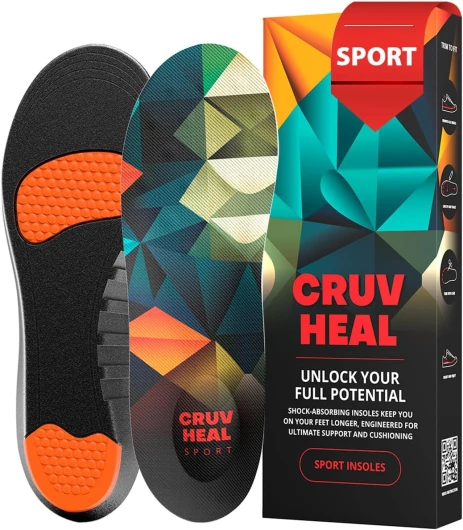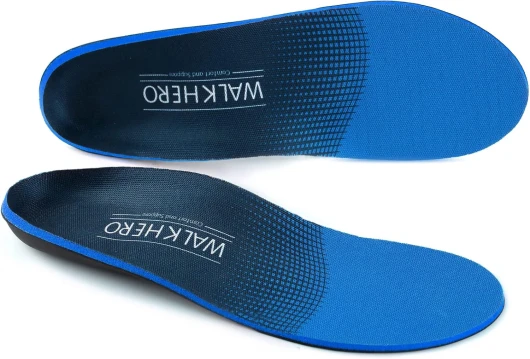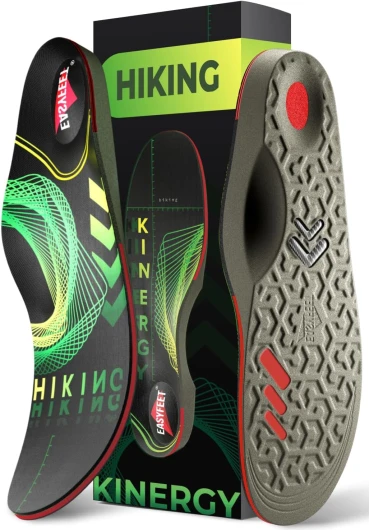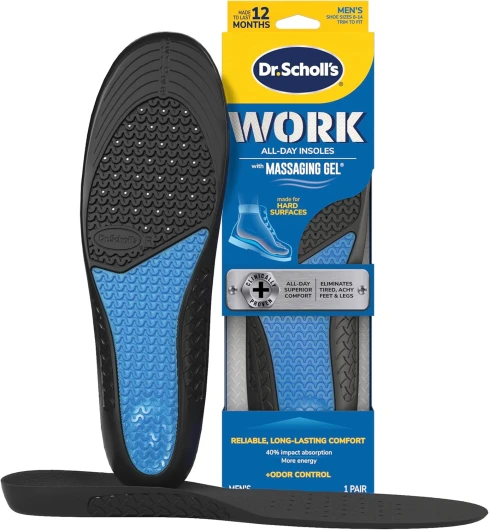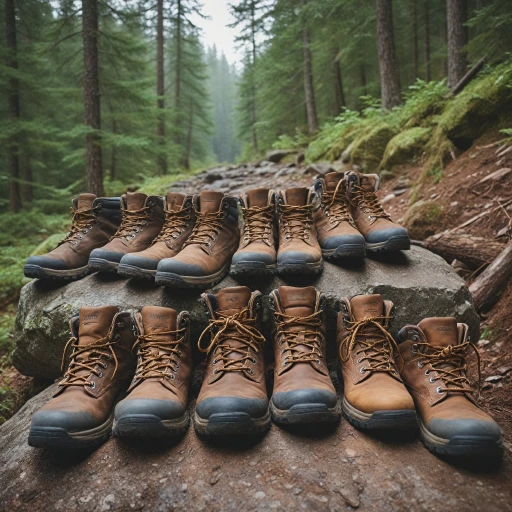
Understanding the Importance of Boot Inserts
The Role of Inserts in Hiking Comfort
When it comes to hiking, the comfort of your feet is paramount. The right boot inserts, or insoles, can make a significant difference in your hiking experience. They provide essential support and cushioning, helping to prevent foot fatigue and discomfort during long treks. Whether you have a high arch or a low profile foot, finding the right insole is crucial for maintaining foot health and enhancing your overall hiking performance.
Why Inserts Matter
Inserts are not just an accessory; they are a necessity for many hikers. They offer dynamic arch support, which is vital for reducing strain on your feet. For those with specific needs, such as women or individuals with high arches, there are tailored options available. Inserts like the Currex HikePro are designed to cater to different arch heights and foot profiles, ensuring that every step you take is supported.
Enhancing Your Hiking Experience
Inserts can transform your hiking boots into a more comfortable and supportive environment for your feet. By providing a deep heel cup and additional cushioning, they help distribute pressure evenly across your foot. This can be particularly beneficial when navigating uneven terrain or carrying a heavy backpack. Moreover, the right insert can prevent common hiking issues such as blisters and hot spots, allowing you to focus on the trail ahead.
For more insights on how to enhance your hiking experience, you might find this article on the impact of red shoe laces on hiking boots interesting.
Types of Boot Inserts for Hiking
The Variety of Hiking Boot Inserts
Hiking boots are designed to ensure comfort and provide support through various terrains. However, the performance of these boots can be enhanced significantly with the use of suitable insoles. There are several types of boot inserts for hiking, each offering unique benefits and functionality. Understanding these options can help you find the right fit for your demands.
Firstly, insoles differ by arch height. Whether you have a high, medium, or low arch in your foot, choosing an insole that matches your specific arch is essential for comfort and injury prevention. High arch options, for instance, can provide the necessary arch support to alleviate foot stress.
In terms of materials, choices abound. The Currex HikePro insoles, known for their dynamic arch design, offer tailored options for those seeking pinpoint support and comfort. Moreover, there are insoles hiking made from memory foam and gel materials that adapt to the foot's contours, providing a snug fit within your hiking boots.
Durability is another critical factor. Hiking insoles often come constructed with stress-resistant materials, providing enduring performance in rugged environments. For those whose priority is supplementary heel cup stabilization, selecting insoles with a deep heel profile is essential. This feature can enhance gait and encourage better foot positioning within the shoe.
Moreover, special consideration must be made for differences in gender. Some inserts are designed specifically as women options, focusing on the anatomical differences in women’s foot shapes. To discover more about the top-performing boots for women, check out our comprehensive guide on exploring the best Vasque hiking boots for women.
Understanding the distinctions between various hiking boot insoles will help you make an informed choice, improving your hiking boot experience and ensuring your feet remain comfortable throughout your adventures.
Choosing the Right Insert for Your Needs
Finding the Ideal Insert
When picking the right insole for your hiking boots, it is crucial to consider various factors that relate to your personal hiking experiences and needs. First, assess your foot arch type. Whether you have low, medium, or high arches, this will influence the level of arch support required for optimal comfort. Hikers with high arches might need inserts offering high arch support to prevent foot fatigue.
- Insole Length: Some insoles cover the full length of your boot, while others focus on the heel and arch areas. Full-length insoles can provide consistent support, while shorter options might be more breathable and ideal for quick fixes.
- Heel Cup: Deep heel cups are essential for stability and reducing the risk of blisters. They help in aligning your foot properly within the shoe, which is particularly useful in rocky terrains.
- Material and Durability: Opt for materials known for durability and moisture-wicking properties. Brands like Currex offer dynamic arch technology in their HikePro insoles, combining comfort with robust materials.
- Gender-specific Options: Women’s hiking insoles may differ in build to accommodate smaller, narrower feet. Taking this into account ensures a snug fit, enhancing your hiking experience.
Keep in mind the regular price and consider it against the insole's features. The perfect insole inside your boots is an investment towards more comfortable and enjoyable hikes.
Top Recommended Boot Inserts for Hikers
Notable Inserts that Enhance the Hiking Experience
Finding the perfect insoles for your hiking boots can significantly transform your journey through rugged terrains and nature trails. Various options cater to specific needs, preferences, and foot types. Here, we delve into some recommended insole choices that have gained traction among hiking enthusiasts.- Currex HikePro: Known for its dynamic arch support, the Currex HikePro insoles are tailored to fit different arch heights—low, high, and medium. These insoles provide excellent support for regular hiking activities, addressing a range of foot profiles. They come with a high level of adaptability, offering a snug fit and preventing excessive movement within the boots.
- Sole Active Thick: This insole option stands out for its thick cushioning, which offers maximum comfort on long hiking trips. With deep heel cups designed to provide stable support, these insoles are ideal for those with high arch profiles. They not only enhance strike absorption but also aid unparalleled foot stability.
- Superfeet Green: As a go-to for many hikers, the Superfeet Green insoles are revered for their robust support high and durable construction. These insoles are perfect for those who require enhanced arch support, fitting snugly in the heel cup while distributing weight evenly across the foot. The regular price may be slightly higher, but the accompanying durability and support make them a worthy addition.
- Powerstep Pinnacle: For those in need of controlled cushioning with medical-grade arch support, the Powerstep Pinnacle insoles hit the mark. Especially beneficial for hikers with black boots or women options, these insoles ensure the feet remain aligned, minimizing fatigue over prolonged hikes. Their low-impact design suits a variety of foot types.
- Sidas 3 Feet: Tailored for dynamic hiking adventures, the Sidas 3 Feet insoles come in variations designed per unique foot shape and arch height requirements. Their deep heel cup engineering and high-quality cushioning support the feet by reducing pressure points.
How to Properly Fit and Maintain Boot Inserts
Fitting Your Boot Inserts: Tips and Tricks
Properly fitting your boot inserts is essential for maximizing comfort and performance during your hiking adventures. Ensuring the right fit can significantly enhance your hiking experience, as well-fitted insoles provide the necessary support for your arches and feet.
- Match the Profile: When choosing insoles, whether they're designed for high, medium, or low arch support, it’s important to match the profile of the insole with your foot's natural shape. Understanding your foot profile, such as high arch, helps in choosing suitable options like currex hikepro or sole active insoles.
- Size and Cut: Boot inserts often come in a range of sizes. Carefully select the right size, which might require trimming the insole to fit the designated space within your hiking boots. Consider leaving some space at the heel cup for dynamic comfort.
- Test the Fit: Once placed, test your insole inside the boots by walking on level ground. Check that there isn’t any unnecessary movement or discomfort. Pay attention to how the insert supports your arch height and ensure the heel doesn’t lift, which can reduce stability.
Maintaining Your Hiking Insoles
Regular maintenance of your insoles ensures durability and keeps your hiking boots in top form. Here are a few steps you can follow for maintaining your insoles:
- Regular Cleaning: Dirt and moisture can degrade the materials over time. Clean the insoles regularly with a mild soap and water solution, being sure to dry them completely before reinserting them into your boots shoes.
- Inspect Often: Regularly check for signs of wear and tear such as thinning padding or damage to the heel cup or arch areas. Consider replacing them if they no longer provide adequate support high.
- Rotation: If you frequently hike, rotate between a couple of pairs of hiking insoles. This allows each set to breathe and recover between uses, extending the life of the currex and hike support insoles.
Ensuring your hiking insoles are well-fit and cared for increases the quality of your hiking journeys. Proper fit and maintenance also mitigate common foot issues, reducing fatigue and enhancing enjoyment.
Common Mistakes to Avoid with Boot Inserts
Avoiding Missteps with Boot Inserts
Maximizing the benefits of your boot inserts requires careful consideration and the avoidance of common pitfalls that can lead to discomfort or ineffective support. Here's how to ensure you're on the right path:- Neglecting the Right Fit: Ensure that the insole inside your hiking boots fits perfectly. A cramped fit can cause pressure points, while a loose fit fails to provide the necessary support. Always check the insole's size against your foot and the boot's interior before committing.
- Ignoring Arch and Profile Needs: Take note of your arch height—whether it's high, medium, or low. Inserts like the Currex Hikepro offer dynamic arch options to cater to various needs. Similarly, women often require specific women options to match different foot profiles. Overlooking these can result in discomfort during long hikes.
- Overlooking Heel and Cup Needs: The heel cup should cradle your foot effectively, offering deep heel support without any slip. This is crucial for maintaining stability on uneven terrains. The sole active profile and heel cup need careful assessment against your hiking activities.
- Skimping on Quality for Price: While it's tempting to opt for low-cost insoles, the regular price often reflects the quality and durability of the product. Investing in reliable options such as Currex or high-quality hike support insoles can enhance your hiking experience significantly.
- Forgetting Regular Maintenance: Regularly check for wear and tear. Hiking insoles may need replacement every few months, depending on use. Maintaining them involves not just washing but also inspecting the arch support and structure integrity.

